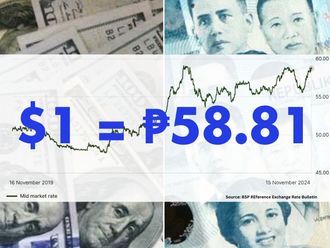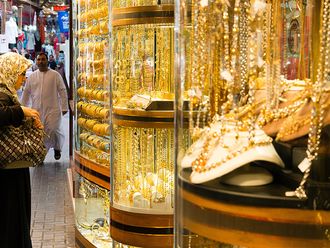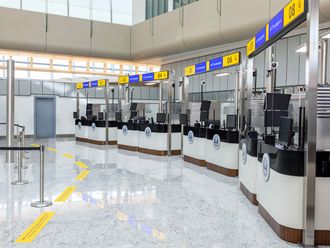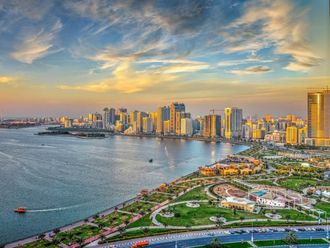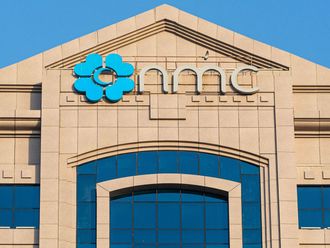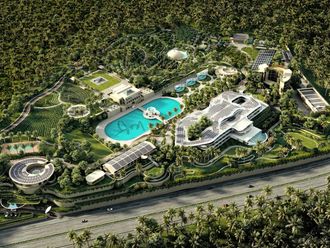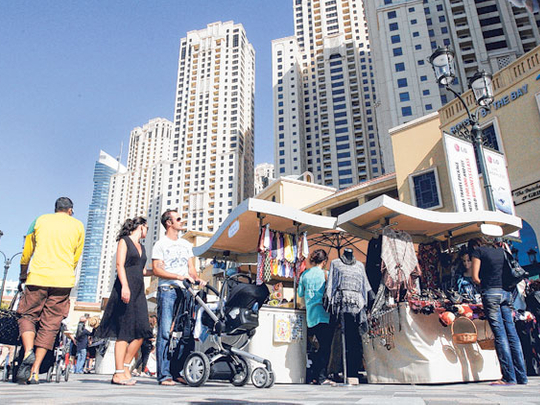
Dubai:
The year 2012 will be remembered in the UAE’s history, among others, for economic recovery from the biggest financial crisis in its history starting October 2008. All key economic sectors are showing signs of growth in various degrees.
Although the UAE economy started to turn around last year, the real effect of the growth has been felt throughout 2012, especially in trade, aviation, tourism and retail sectors — the key drivers of economic growth — in addition to oil. Even the real estate and construction sectors have begun to turn around with developers actually awarding construction contracts and selling new projects.
“Dubai’s recovery from the global economic downturn goes from strength to strength,” Farouk Soussa, chief economist with Citigroup, Mena, says. “Over the past couple of years, economic data have pointed to robust growth in the core economy: transport, tourism, logistics and trade. Investor confidence has returned, with Dubai-related risk assets rallying strongly. And now the feel good factor appears to be spreading to the property sector: the volume of property transactions is on the rise, and valuations are climbing sharply.
Some of the recent headlines will vouch for the growth undercurrent. On the tourism sector, Abu Dhabi’s hotels reported a 15 per cent growth in the number of guests to 1.74 million while Dubai’s hotels and serviced apartments reported a 10 per cent increase in the number of guests to 5.02 million during the first half of the current year when hotel revenues jumped 22 per cent to Dh9.79 billion.
The UAE’s non-oil foreign trade grew 10 per cent to Dh499 billion ($135.9 billion) in the first six months of 2012, compared to the same period last year, according to the Federal Customs Authority. Exports grew by 40 per cent in the first half of this year to reach Dh77 billion while imports grew by 12 per cent to Dh321.4 billion.
“The recovery of the economy is continuing despite the uncertain global economic environment,” the International Monetary Fund (IMF) said in its report on the UAE. “For 2012, oil production is projected to be flat, whereas non-oil growth is expected to strengthen further to 3.5 per cent. Inflation remained low at 0.9 per cent, mainly due to a continuing decline in housing rents, and price pressures are expected to remain subdued this year.”
The UAE’s nominal GDP, which reached Dh1.32 trillion last year, is expected to cross Dh1.41 trillion this year, according to IMF estimates.
Abu Dhabi, Dubai and Sharjah international airports reported double-digit growth in their latest passenger updates — growing broadly in line with the growth of the three UAE carriers — Etihad, Emirates and Air Arabia. Although Emirates this year reported a Dh1.5 billion net profits, Etihad announced earlier that it has become profitable for the first time. It has also announced a series of acquisitions — stakes in Airberlin, Virgin Blue and Air Seychelles in addition to expanding code-share arrangements that will help it to reach a wider passenger base globally.
On the ports, shipping and logistics sectors that facilitates trade growth, Abu Dhabi emirates has witnessed the biggest shift. It has moved its main port — Mina Zayed from downtown Abu Dhabi city to the large Khalifa Port in Taweelah which will become the country’s second biggest economic gateway after Jebel Ali Free Zone.
Hand-in-hand with the growth in economic activities in Dubai, Jebel Ali port has also undergoing a massive expansion. Together with the development of Dubai World Central — the 140-kilometre aerotropolis — the emirate is gearing up for the development of the region’s biggest sea-to-air logistics corridor that will have far-reaching implications in expanding trade.
“Investor sentiment is back — big time in the country and we could feel that,” Rohit Walia, CEO of Alpen Capital and Executive Vice-President of Sarasin Alpen, a Swiss private bank, told Gulf News.
“Banks are back in the lending mode with provisioning almost behind us — I see an exciting time as growth in the UAE’s key sectors are coming back.”
One could also feel the vibe on the streets — traffic is returning — whether liked or not, as a byproduct of the economic growth.
On the real estate, most large developers have recovered from the downturn. In September, Emaar Properties offered Boulevard in Downtown for sale — which was sold out in a few hours — which reflects a return of investor appetite. Similarly, Nakheel which was the worst victim of the crisis in 2008, has started selling plots and awarded three construction contracts. It has reported a 97 per cent jump in nine-months profits and a 126 per cent jump in revenues — again reflecting the market sentiment.
“Dubai’s real estate recovery is in line with the wider economic recovery, and is well supported by economic fundamentals,” says Soussa. “The economic recovery and pick-up in the real estate market is unambiguously good news in the near-term.”
On top of these, the country continues to invest in people — about 51 per cent of the country’s Dh44.6 billion balanced budget has been allocated to social services sector with an additional 22 per cent going into education.
NUMBERS BOX:
Dh499 billion value of UAE’s non-oil foreign trade in H1
Dh9.79 billion revenues generated by Dubai’s hotels
Dh44.6 billion budget allocated by the Federal Government for 2013
Dh1.41 trillion UAE’s nominal GDP expected this year


